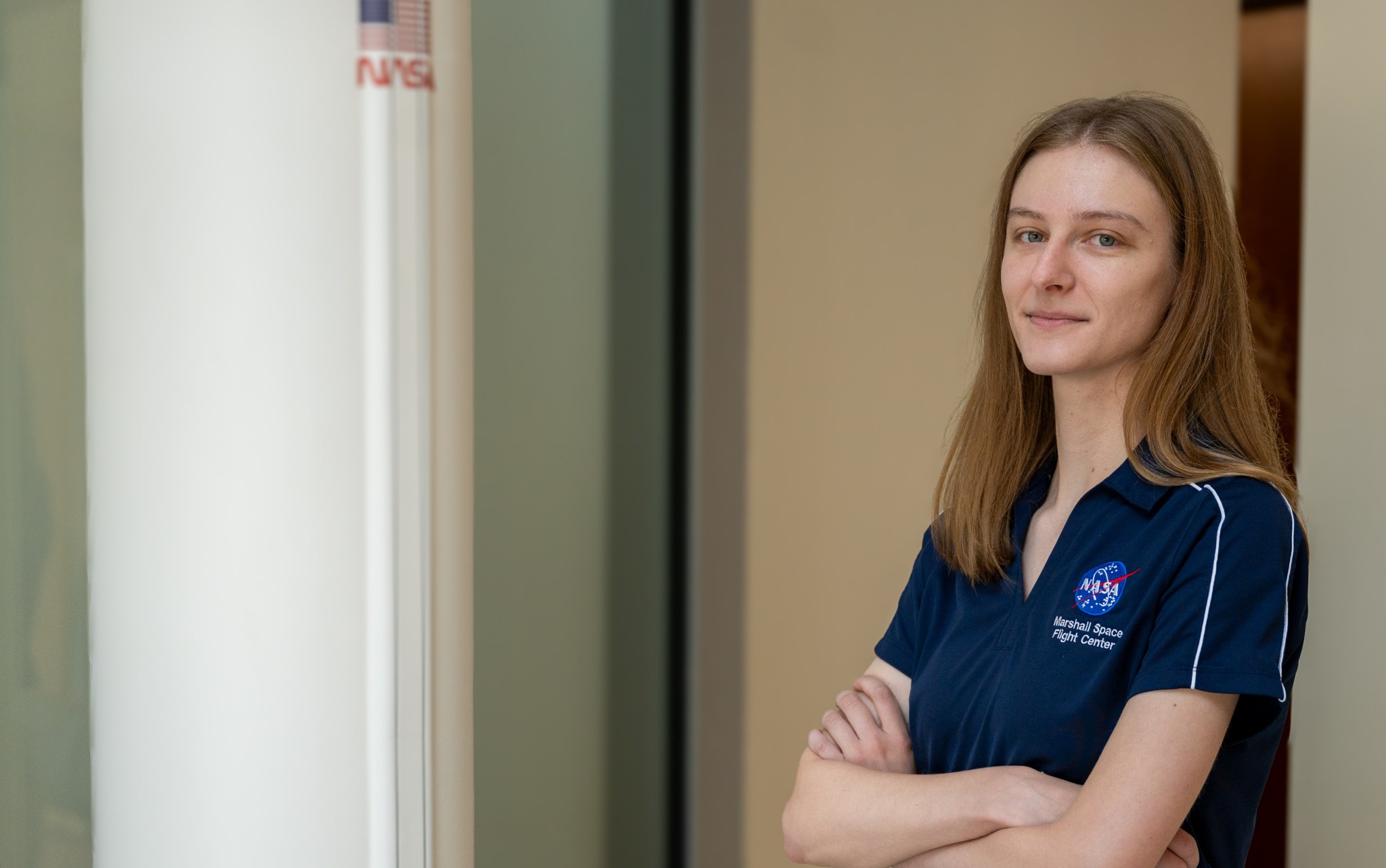

“With Artemis, we’re moving beyond what NASA did with Apollo and that’s really inspiring, especially to our younger workforce. We’re trying to push farther and it’s really going to drive a lot of technology development on the way there,” Ryan said. “This is a dream come true to be working on Artemis and solving problems so humanity can get back to the Moon then on to Mars.”
A passion for puzzles, problem-solving, and propulsion led Sarah Ryan – a native of Columbus, Ohio – to her current position as Raptor engine lead for NASA’s HLS (Human Landing System) insight team at NASA’s Marshall Space Flight Center in Huntsville, Alabama. The SpaceX Raptor rocket engine powers the company’s Starship and Super Heavy rocket. SpaceX will land astronauts on the Moon for NASA’s Artemis III and Artemis IV missions using the Starship HLS. NASA’s Artemis campaign aims to land the first woman, first person of color, and first international partner astronaut on the Moon.
“My team looks at how the components of the Raptor engine work together. Then, we evaluate the performance of the full system to make sure it will accomplish the NASA HLS and Artemis missions,” Ryan said. “I get to see lots of pieces and parts of the puzzle and then look at the system as a whole to make sure it meets NASA’s needs.”
While earning a bachelor’s degree from Case Western Reserve University in Cleveland with a dual major in aerospace engineering and mechanical engineering, Ryan had an internship at NASA Marshall, working on a payload for a science mission onboard the International Space Station.
After working for a year on satellite design, Ryan returned to NASA Marshall. She noted that the opportunity to work in Marshall’s Engine Systems branch, to be involved with pushing technology forward, and to work on Artemis, really drew her back to NASA. Ryan later earned a master’s degree in aerospace systems from the University of Alabama in Huntsville.
When not occupied with rocket engine development, Ryan likes to work on quieter hobbies in her free time, including reading, board games, crocheting, and solving all manner of puzzles – crosswords, number games, word games, and more. Her interest for solving puzzles carries over into her work on the Raptor rocket engines for HLS.
“My favorite tasks are the ones that most resemble a puzzle, Ryan said. “If we’re investigating an issue and have a lot of information to assess, I love putting all the pieces together and figuring out what happened, why, and the path forward. I enjoy digging into the data and solving those puzzles.”
With Artemis, NASA will explore more of the Moon than ever before, learn how to live and work away from home, and prepare for future human exploration of Mars. NASA’s SLS (Space Launch System) rocket, exploration ground systems, and Orion spacecraft, along with the HLS, next-generation spacesuits, Gateway lunar space station, and future rovers are NASA’s foundation for deep space exploration.
For more on HLS, visit:
https://www.nasa.gov/humans-in-space/human-landing-system
Corinne Beckinger
Marshall Space Flight Center, Huntsville, Ala.
256.544.0034
[email protected]








